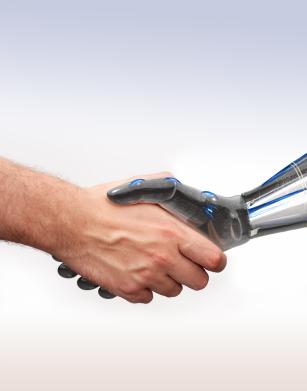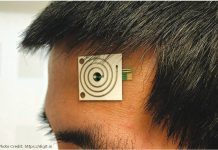
As its well known robotics has made tremendous strides in replicating the senses of sight and sound, but smell and taste are still lagging behind, and touch was thought to be the most difficult of them, all until new pressure-sensitive electronic skin came along.
The electronic skin is made out of germanium and silicon wrapped around a sticky polyimide film. The prototype measures about 7.6 square inches and can detect different pressures between 0 and 15 kilopascals, which is the range of pressures one might encounter while typing on a keyboard or holding a small object. The skin does this thanks to its rubber skin, which changes its thickness in response to changes in pressure, which is then measured and controlled by built-in capacitors.
Design team member Ali Javey explains why a robot with a well-developed sense of touch is so crucial to expanding robots‘ usefulness: “Humans generally know how to hold a fragile egg without breaking it.
If we ever wanted a robot that could unload the dishes, for instance, we’d want to make sure it doesn’t break the wine glasses in the process. But we’d also want the robot to grip the stock pot without dropping it.”
And the same logic is true outside of the household, of course, but it’s worth remembering how many simple activities human take for granted would defeat current robots. Even something as basic as getting dressed or reading a newspaper requires a fairly intuitive sense of touch and pressure, and this new skin puts those abilities within robots‘ grasp.
This is definitely a breakthrough, but sensing a range of pressure is hardly a good substitute for the extremely sophisticated sensors we have built into our skin. We don’t just sense pressure, but other linked sensations like heat, pain, and others.
Of course, once we perfect one type of artificial sensor, we could make pretty much any other type of sensor we want, giving robots the ability to detect anything from radioactivity to biological agents purely by touch. That would greatly increase the usefulness of robotic probes in areas humans can’t venture.
Even better, this artificial skin could one day help restore sensation to humans that have lost feeling in parts of their body, although Stanford researcher leader Zhenan Bao says that’s still a ways off:
“Connecting the artificial skin with the human nerve system will be a very challenging task. Ultimately, in the very distant future, we would like to make a skin which performs really like human skin and to be able to connect it to nerve cells on the arm and thus restore sensation. Initially, the prototype that we envision would be more like a handheld device, or maybe a device that connects to other parts of the body that have skin sensation.
The device would generate a pulse that would stimulate other parts of the skin, giving the kind of signal ‘my artificial hand is touching something’, for instance”.



